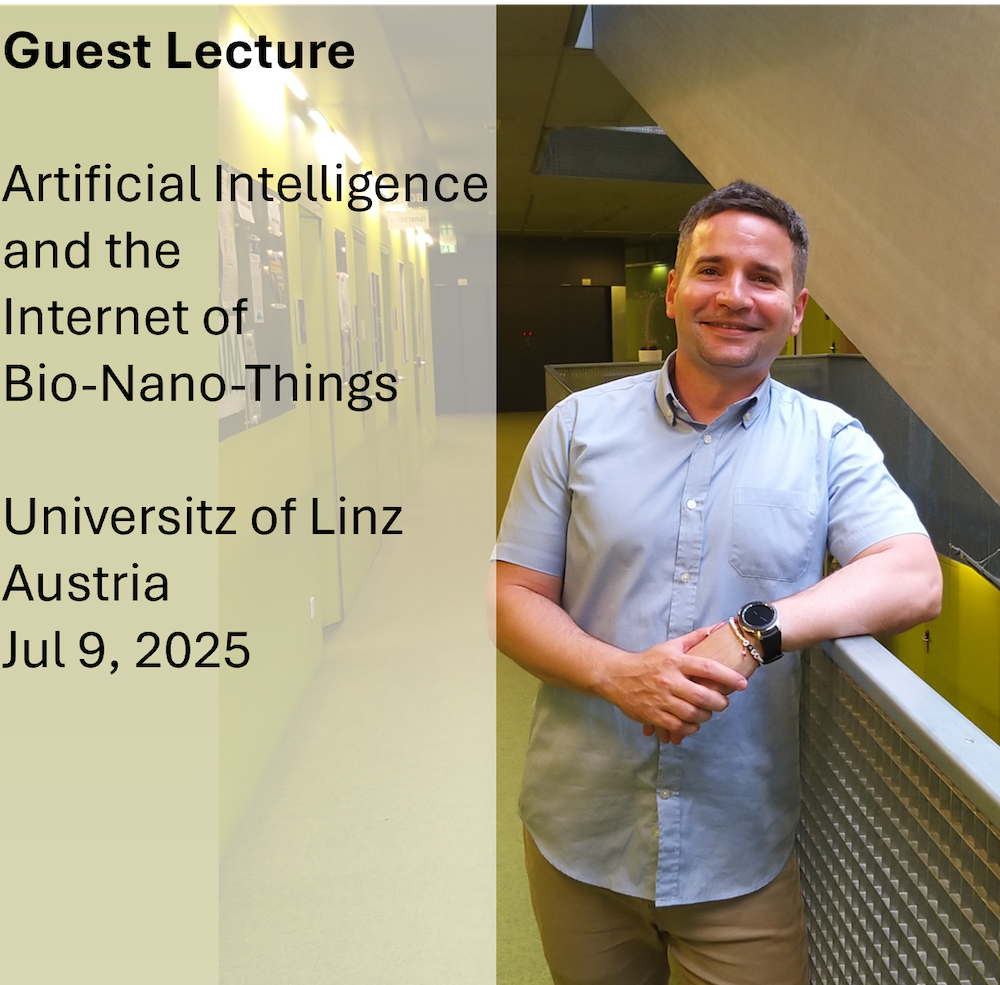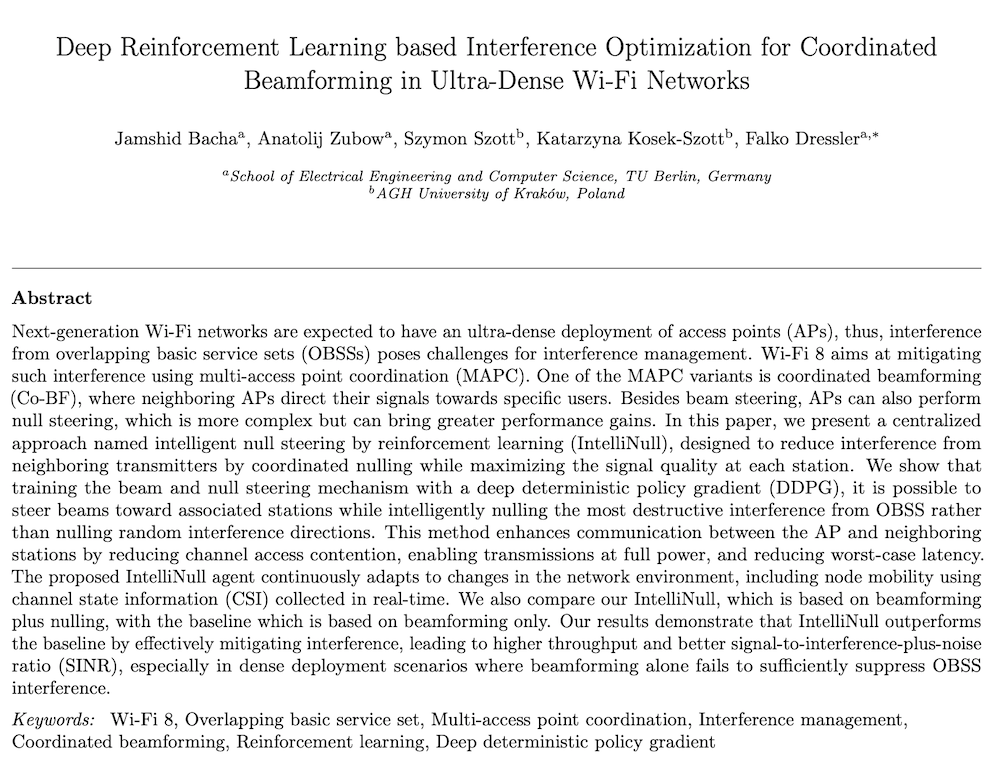Literature Database Entry
anwar2021physical
Waqar Anwar, "On Physical Layer Abstraction Modeling for 5G and Beyond Communications," PhD Thesis, Faculty of Electrical and Computer Engineering, Technical University of Dresden (TUD), June 2021. (Advisor: Gerhard P. Fettweis; Referees: Gerhard P. Fettweis and Falko Dressler)
Abstract
The fifth generation (5G) and beyond technologies require ultra-reliable communications to enable various advanced use cases such as industrial automation, tactile internet, vehicle-to-everything (V2X), and safety-critical applications. To meet the stringent re- quirements of these use cases new standards and technologies are being developed such as 5G new radio (NR) and IEEE 802.11bd. The most important step while developing or deploying technology is to evaluate its performance in various scenarios to ensure its suitability for the desired use case. These evaluations are usually carried out through system-level simulators. However, the system-level simulations become time-intensive and require highly complex computations, if the data packets are processed through a complete transmit and receive physical layer (PHY) chain. As it requires many multiplication and division operations while encoding and modulation of data and convolution operation with the channel. Therefore, to speed up these simulations, the PHY is commonly abstracted using a link modeling tecnique also known as physical layer abstraction (PLA). In PLA, the impact of various fading and interference effects on PHY performance is modeled as a function of the received signal-to-interference-plus-noise ratio (SINR). Consequently, the accuracy of system-level evaluations greatly depends on the modeling accuracy of PLA. Furthermore, with the evolution of wireless technologies, new enhancements are expected in upcoming standards. As a result, PLA needs to be comprehensive enough to model their impact on PHY performance. The main focus of this thesis is to enhance the accuracy of existing PLA by developing new algorithms, and extend its modeling capabilities to future proof technologies such as candidate multi-carrier modulation techniques and multi-connectivity communications. To improve accuracy, a new PLA technique is developed using a tighter upper bound on symbol error rate (SER). Further, to model the performance of various multi-carrier modulation techniques, i.e., orthogonal frequency division multiplexing (OFDM), discrete Fourier transform (DFT)-spread-OFDM (DFT-s-OFDM), generalized frequency division multiplexing (GFDM), and orthogonal time frequency space (OTFS), the received SINR expressions are derived under the influence of inter-carrier interference (ICI). Then PLA is extended to abstract the performance of these multi-carrier modulation techniques, where the impact of different fading conditions on the received data symbols is modeled. A further extension to PLA is made to abstract the performance of multi-connectivity communications, which is a key enabler for ultra-reliable communications. For the case of multi-connectivity, the joint performance of multiple links is modeled considering multi- ple diversity combining techniques. The accuracy of the developed PLA is evaluated by comparing the simulated and estimated packet error rate (PER) performance. The results show a close match between results obtained from PHY simulation and results predicted through PLA. Finally, the applications of PLA are demonstrated such as performance comparison among multi-carrier modulation techniques, performance comparison of cur- rent and upcoming V2X technologies, and link adaptation in a time-varying channel.
Quick access
Contact
Waqar Anwar
BibTeX reference
@phdthesis{anwar2021physical,
author = {Anwar, Waqar},
title = {{On Physical Layer Abstraction Modeling for 5G and Beyond Communications}},
advisor = {Fettweis, Gerhard P.},
institution = {Faculty of Electrical and Computer Engineering},
location = {Dresden, Germany},
month = {6},
referee = {Fettweis, Gerhard P. and Dressler, Falko},
school = {Technical University of Dresden (TUD)},
type = {PhD Thesis},
year = {2021},
}
Copyright notice
Links to final or draft versions of papers are presented here to ensure timely dissemination of scholarly and technical work. Copyright and all rights therein are retained by authors or by other copyright holders. All persons copying this information are expected to adhere to the terms and constraints invoked by each author's copyright. In most cases, these works may not be reposted or distributed for commercial purposes without the explicit permission of the copyright holder.
The following applies to all papers listed above that have IEEE copyrights: Personal use of this material is permitted. However, permission to reprint/republish this material for advertising or promotional purposes or for creating new collective works for resale or redistribution to servers or lists, or to reuse any copyrighted component of this work in other works must be obtained from the IEEE.
The following applies to all papers listed above that are in submission to IEEE conference/workshop proceedings or journals: This work has been submitted to the IEEE for possible publication. Copyright may be transferred without notice, after which this version may no longer be accessible.
The following applies to all papers listed above that have ACM copyrights: ACM COPYRIGHT NOTICE. Permission to make digital or hard copies of part or all of this work for personal or classroom use is granted without fee provided that copies are not made or distributed for profit or commercial advantage and that copies bear this notice and the full citation on the first page. Copyrights for components of this work owned by others than ACM must be honored. Abstracting with credit is permitted. To copy otherwise, to republish, to post on servers, or to redistribute to lists, requires prior specific permission and/or a fee. Request permissions from Publications Dept., ACM, Inc., fax +1 (212) 869-0481, or permissions@acm.org.
The following applies to all SpringerLink papers listed above that have Springer Science+Business Media copyrights: The original publication is available at www.springerlink.com.
This page was automatically generated using BibDB and bib2web.





